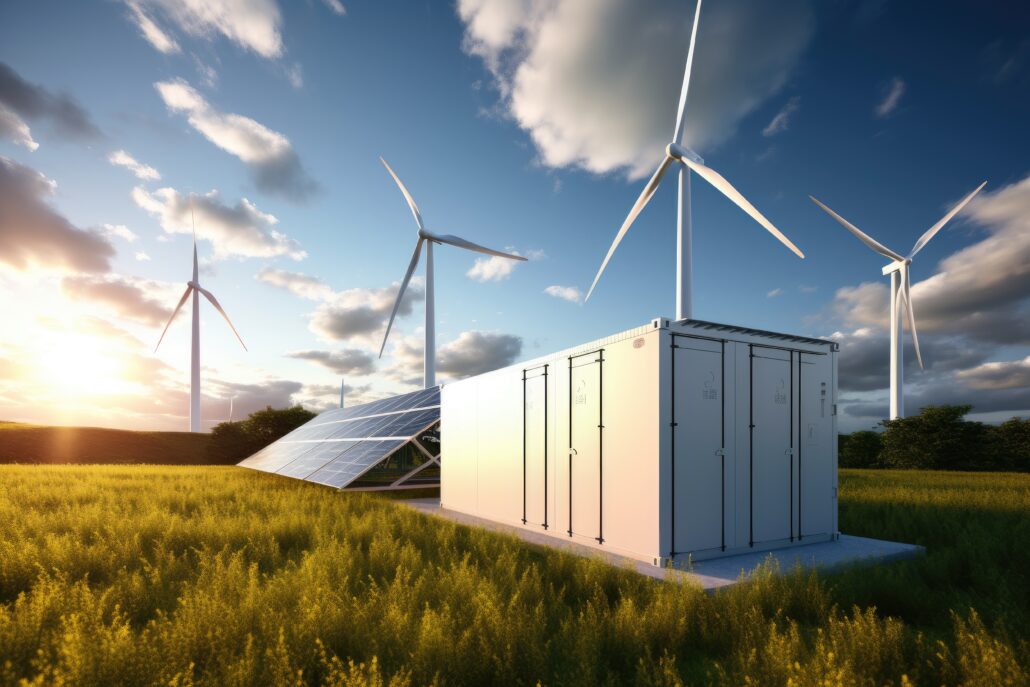Written by Aggeliki Marinou, environmental engineer at Wattcrop.
In the quest for sustainable energy solutions, renewable energy sources have emerged as key players in reducing greenhouse gas emissions and mitigating climate change. Solar, wind, hydro, and other renewable sources offer clean alternatives to fossil fuels, but their intermittent nature poses challenges for reliable energy supply. Energy storage technologies have stepped in to address this issue, enabling the capture and utilization of renewable energy when it’s most needed. However, a question arises: Should energy storage be considered renewable energy itself? Let’s delve into this question while evaluating the critical role of energy storage in sustainable power systems.
The Significance of Energy Storage:
Energy storage systems play a vital role in addressing the intermittency and variability inherent in renewable energy sources. They allow excess energy generated during periods of low demand to be stored for later use when demand is high or when renewable generation is low. This capability enhances grid flexibility, improves reliability, and facilitates the integration of more renewable energy into the power mix.
Types of Energy Storage:
Energy storage technologies come in various forms, each with its unique characteristics and applications. Batteries, such as lithium-ion and flow batteries, are among the most common and versatile energy storage solutions. Pumped hydroelectric storage, compressed air energy storage, and thermal energy storage are other notable examples. These diverse technologies cater to different use cases, ranging from short-term grid stabilization to long-term energy storage for seasonal variations.

Renewability of Energy Storage:
While energy storage itself doesn’t generate electricity, its renewability largely depends on the energy sources used for charging. Energy storage systems are charged using electricity, which can come from both renewable and non-renewable sources. Therefore, the renewability of energy storage hinges on the source of the electricity used for charging.
When energy storage systems are charged using electricity from renewable sources like solar, wind, or hydroelectric power, they indirectly inherit the renewability of these sources. In this scenario, energy storage can be considered a renewable resource since it enables the effective utilization of renewable energy and contributes to overall sustainability goals.
Conversely, if energy storage systems are charged using electricity from fossil fuels or non-renewable sources, their renewability is compromised. In such cases, while energy storage still provides benefits like grid stability and energy arbitrage, it cannot be categorized as a renewable resource due to its dependence on non-renewable energy inputs.
The Path to Sustainable Power Systems:
Achieving truly sustainable power systems requires a holistic approach that prioritizes the deployment of renewable energy sources alongside energy storage technologies. By coupling renewable generation with energy storage, we can maximize the utilization of clean energy resources while minimizing reliance on fossil fuels.
Furthermore, advancements in energy storage technology, coupled with declining costs, are making renewable energy integration more economically viable than ever before. This trend is accelerating the transition towards sustainable power systems worldwide, driving innovation and investment in both renewable energy and energy storage sectors.
In conclusion, energy storage plays a pivotal role in sustainable power systems by mitigating the intermittency of renewable energy sources and enhancing grid flexibility. Whether energy storage can be considered a renewable resource depends on the source of electricity used for charging. When charged with renewable energy, energy storage indirectly inherits renewability and contributes to overall sustainability goals. However, reliance on non-renewable energy sources for charging compromises the renewability of energy storage. Therefore, to achieve truly sustainable power systems, it is imperative to prioritize the integration of renewable energy sources and ensure that energy storage systems are charged using clean, renewable electricity.
Find more interesting articles written by the Wattcrop team!

